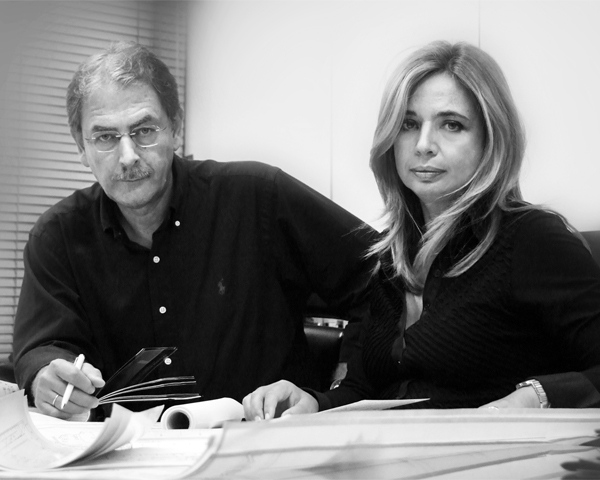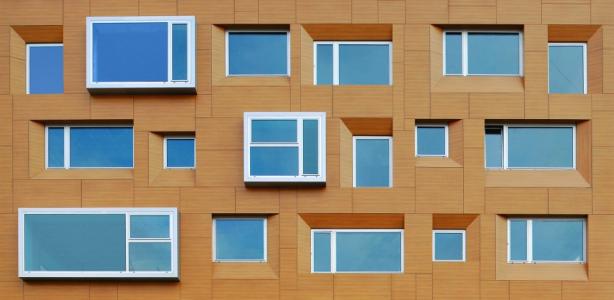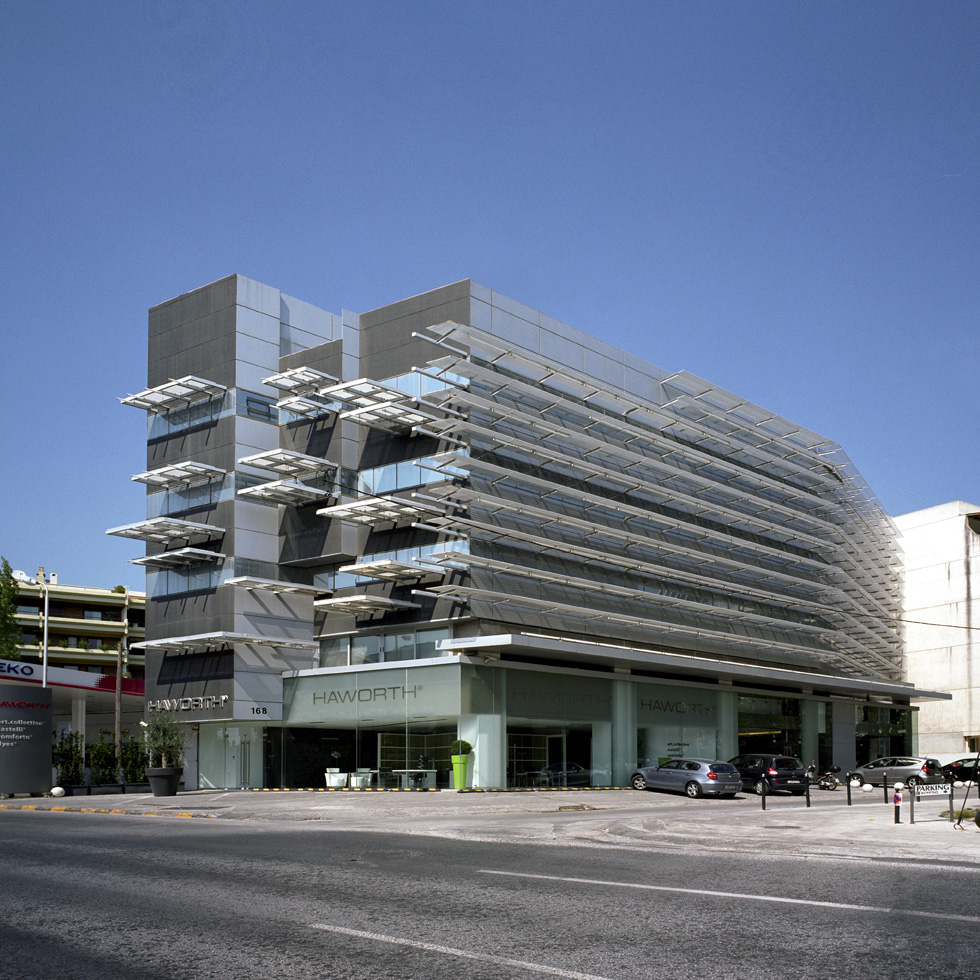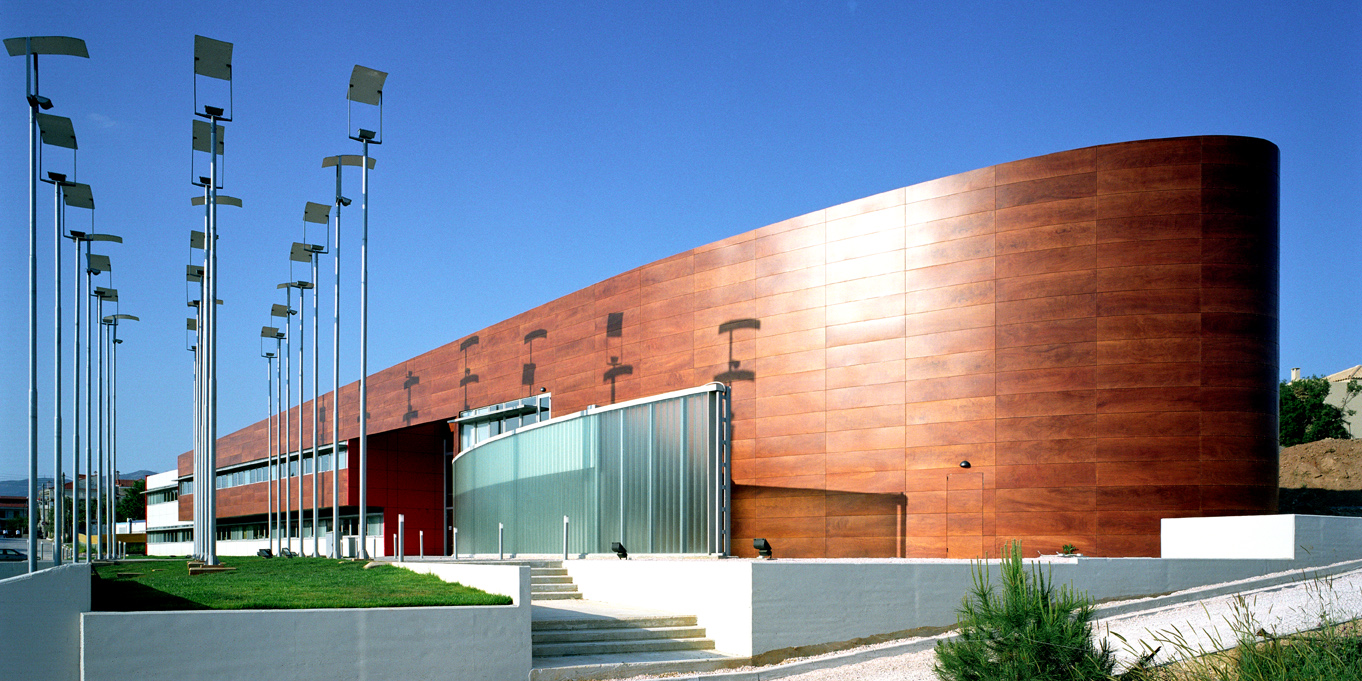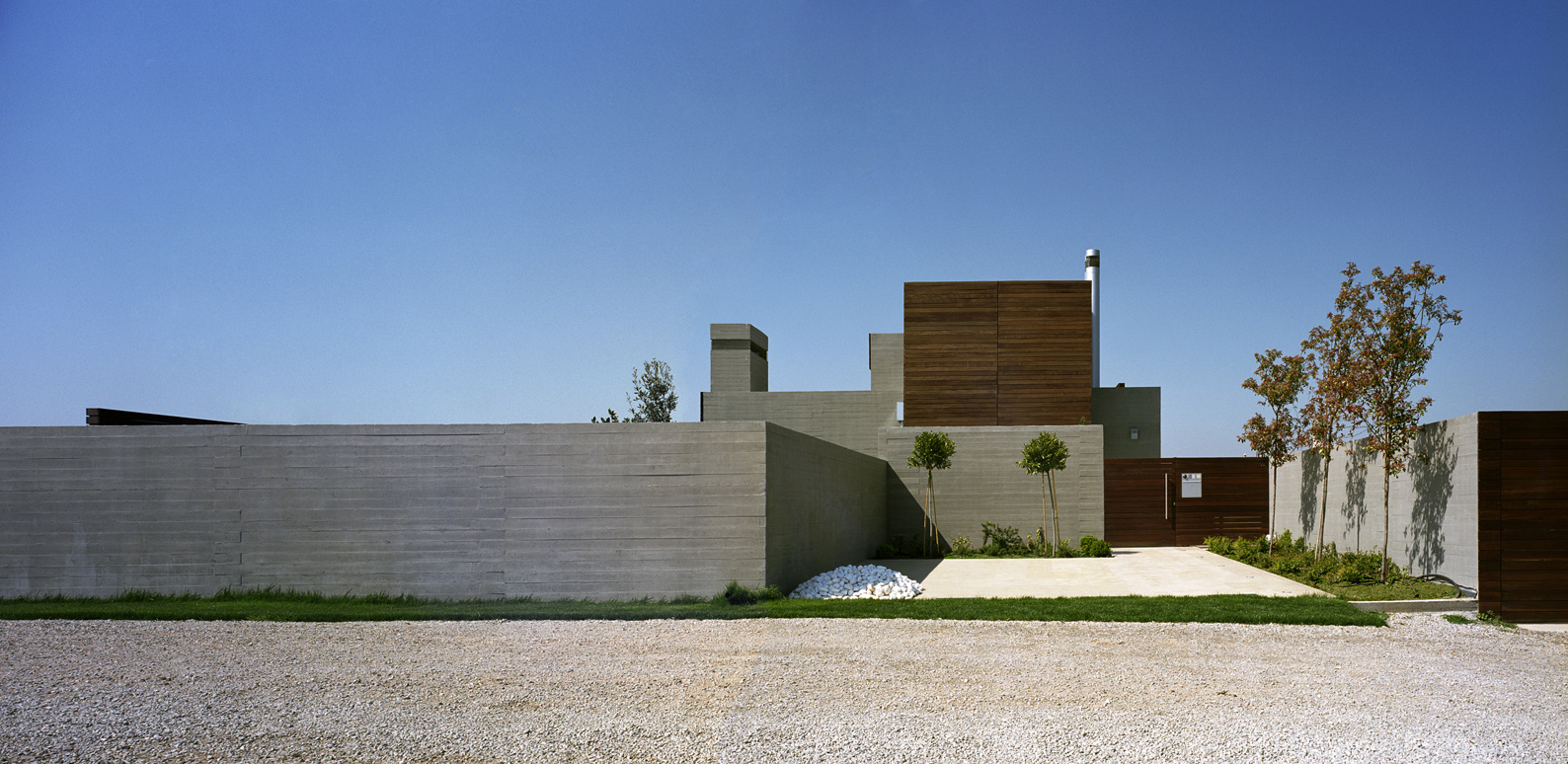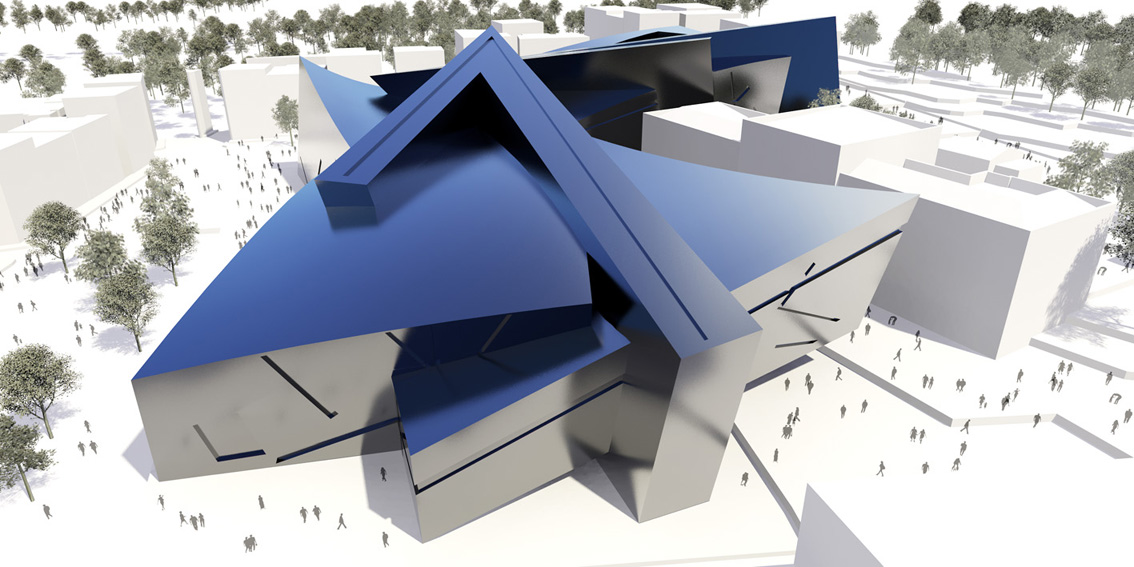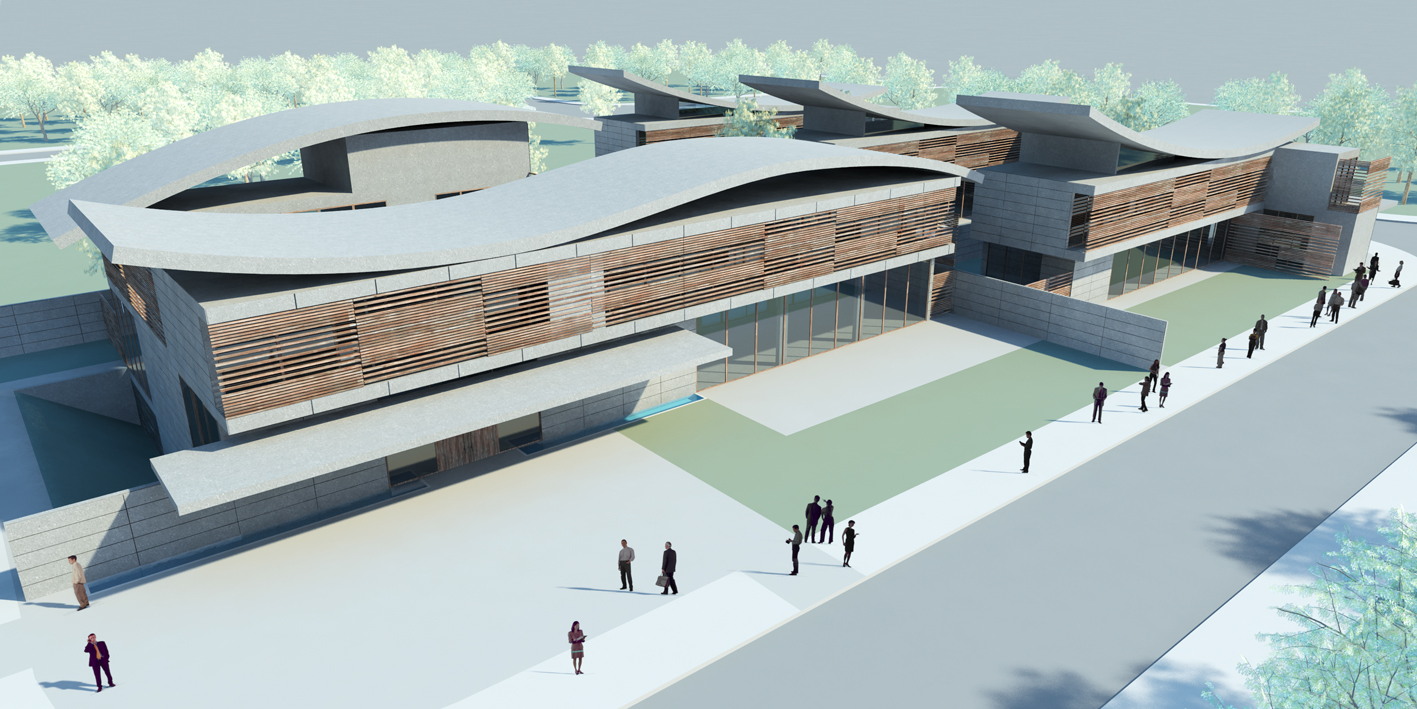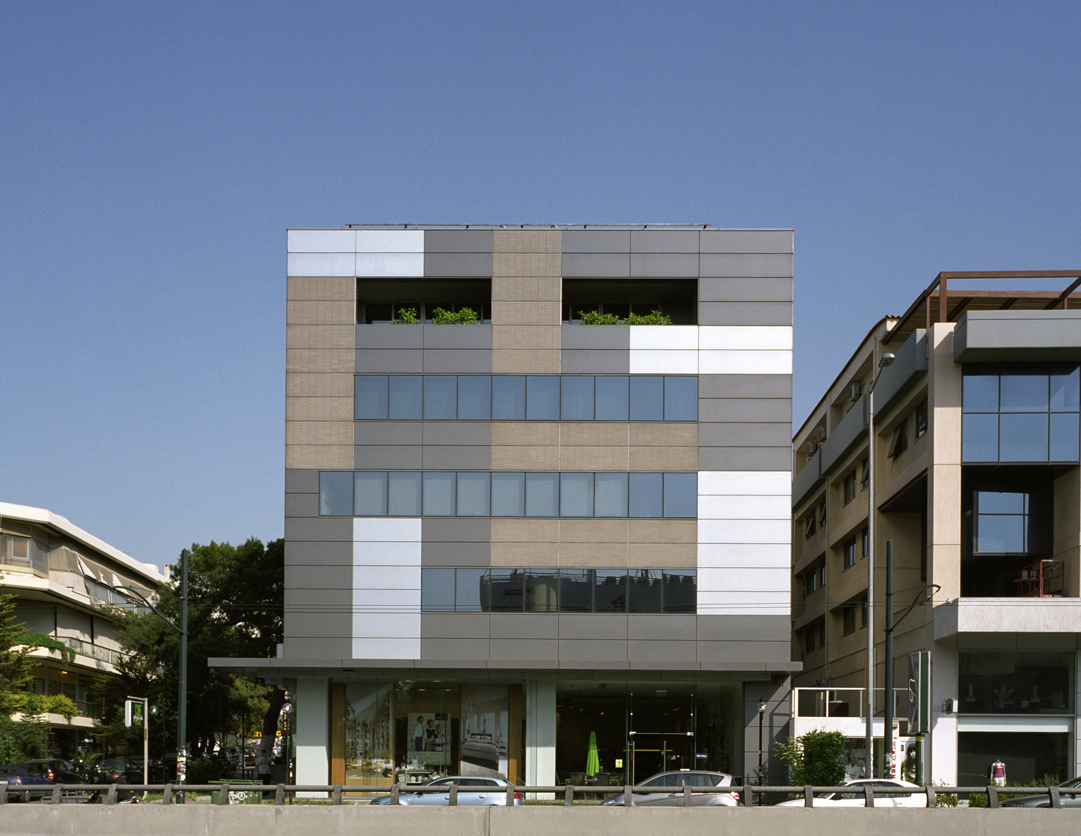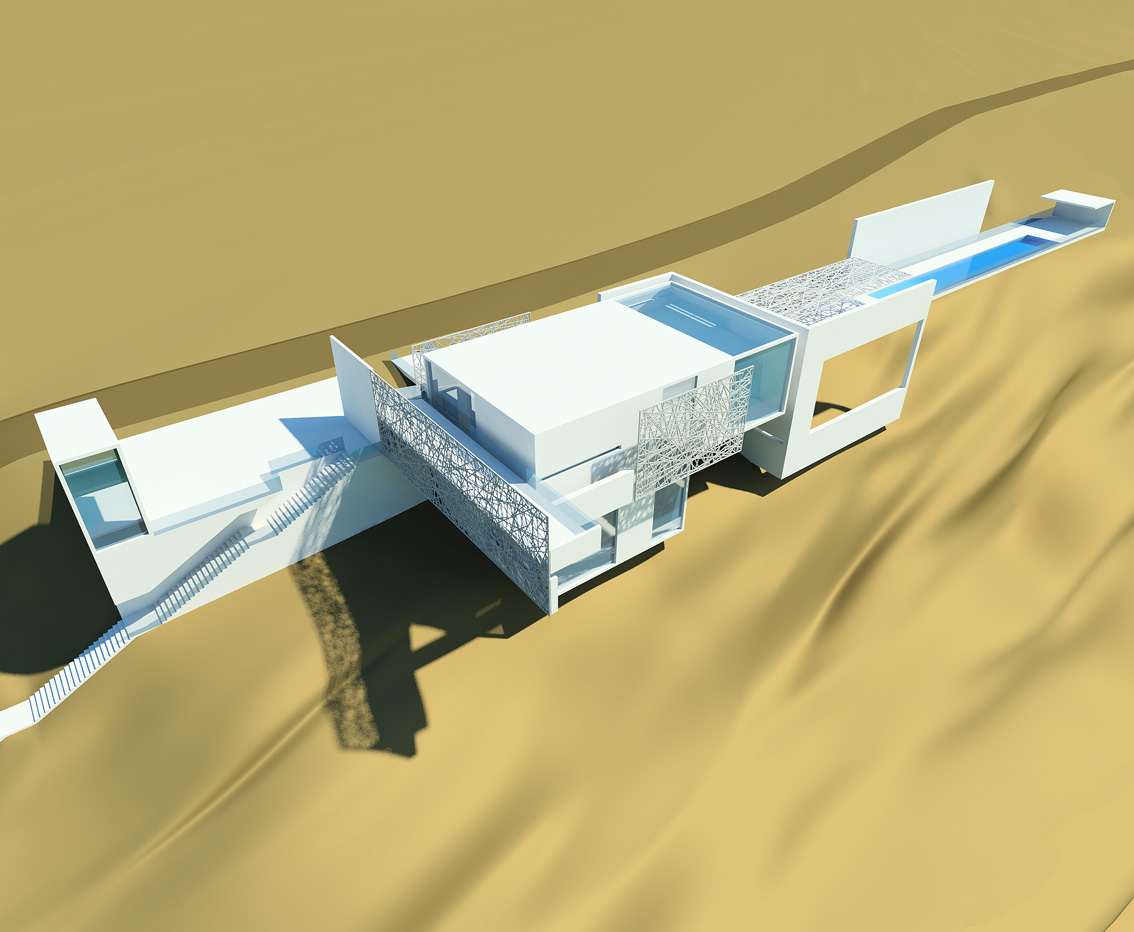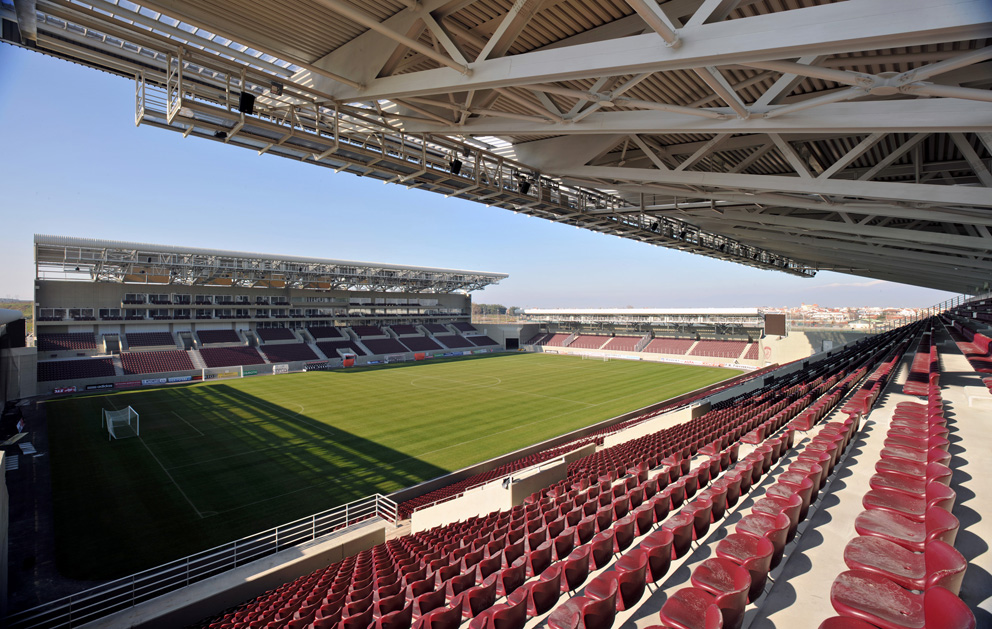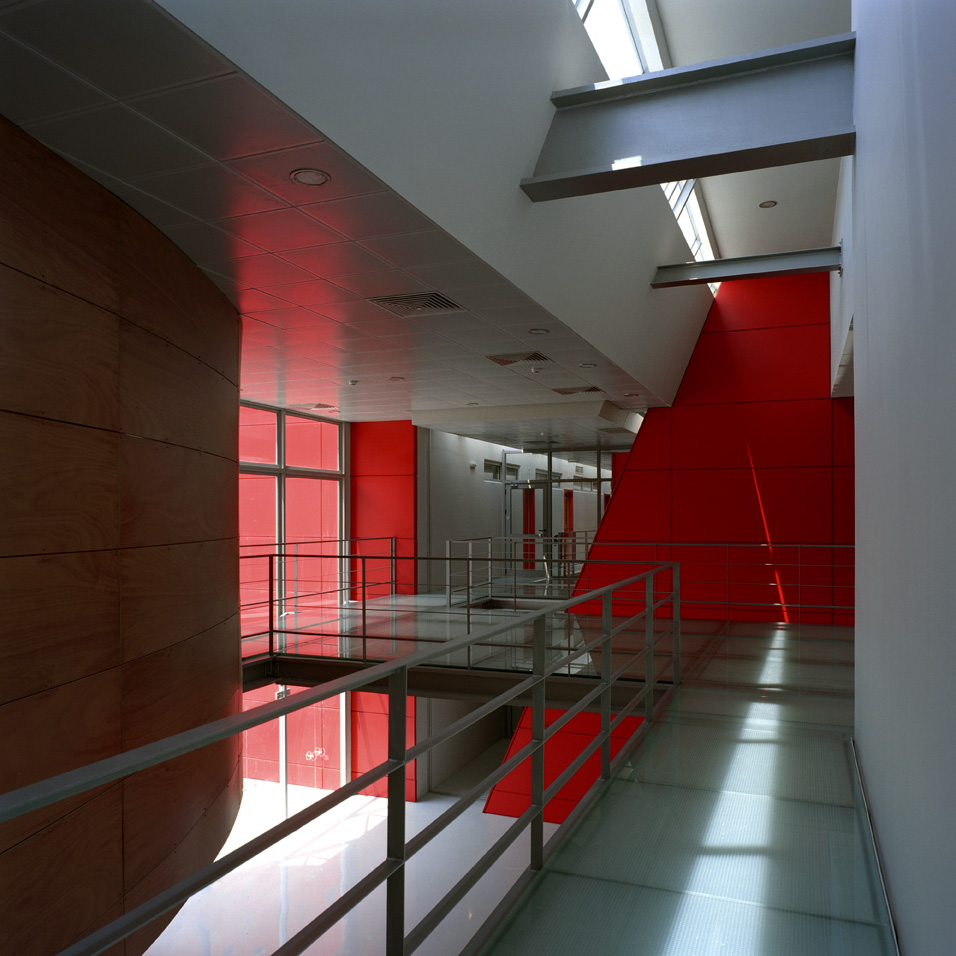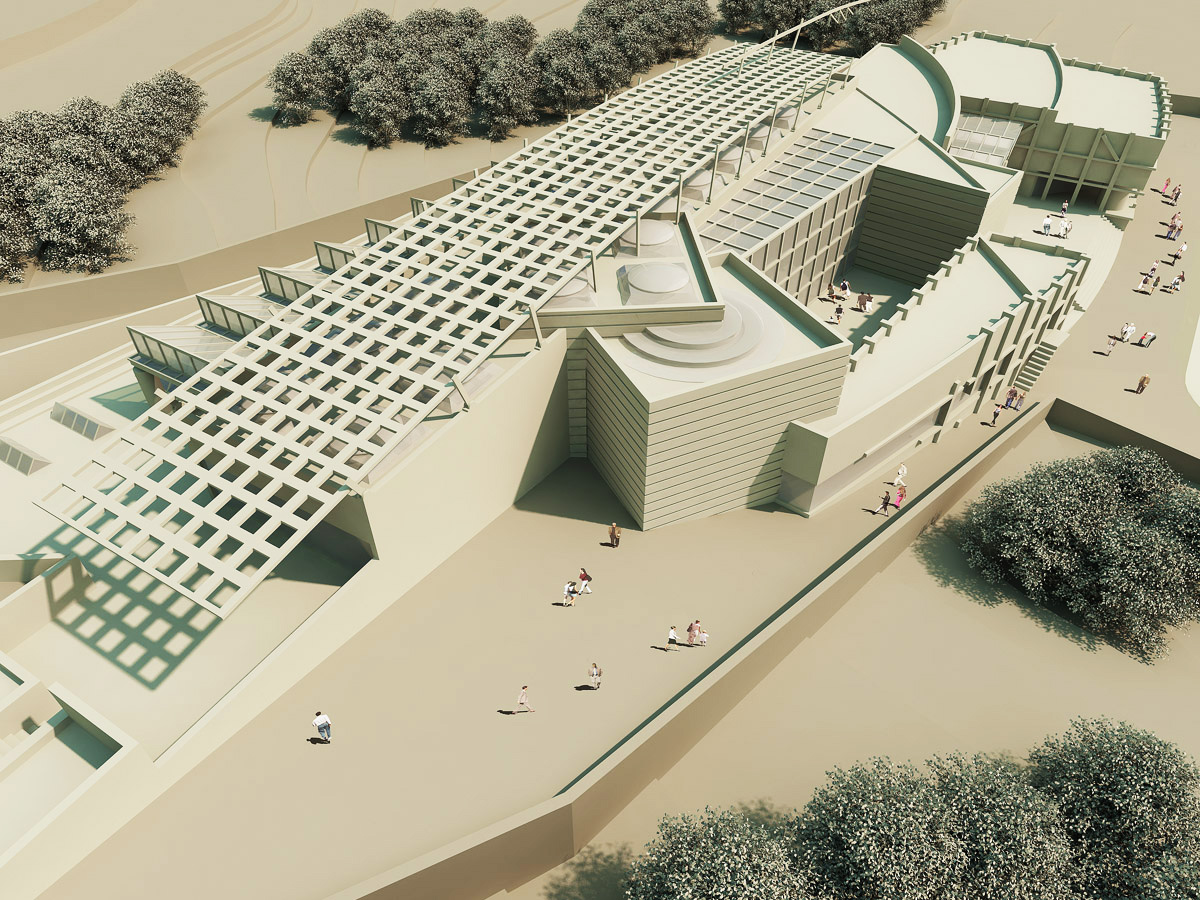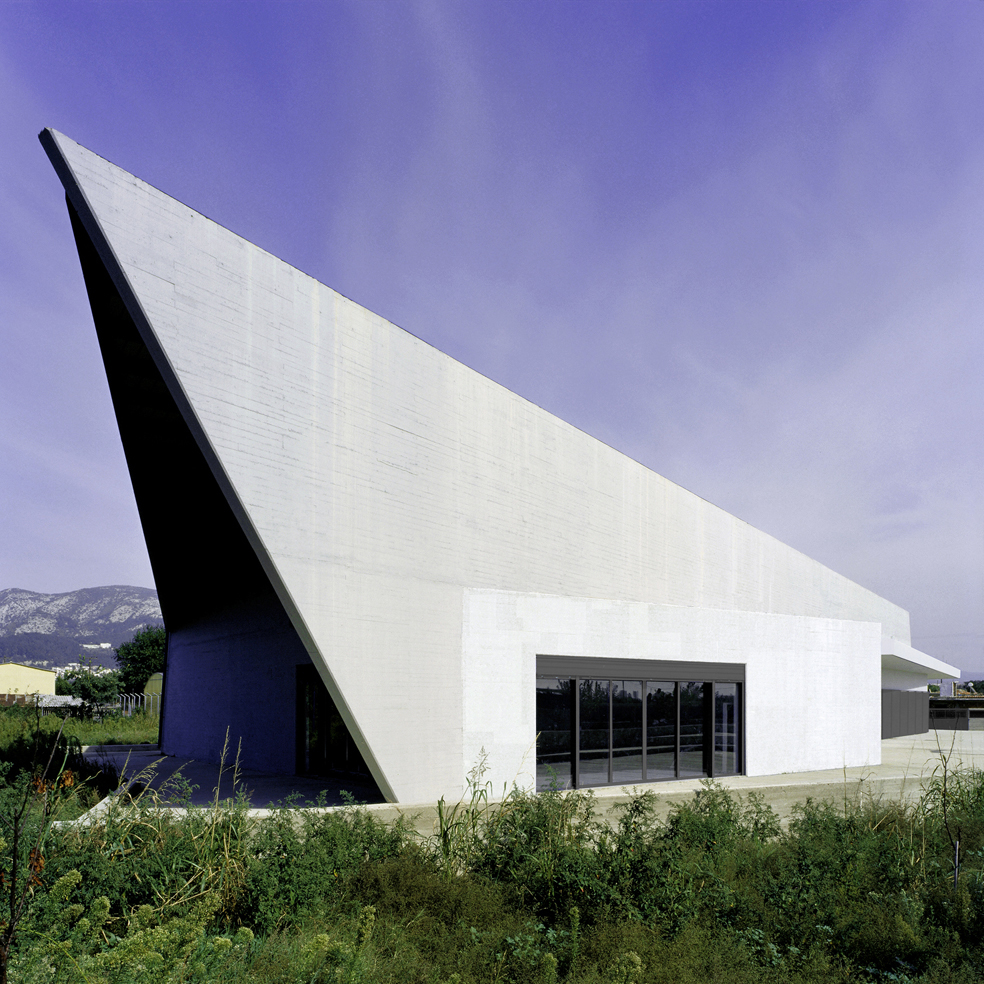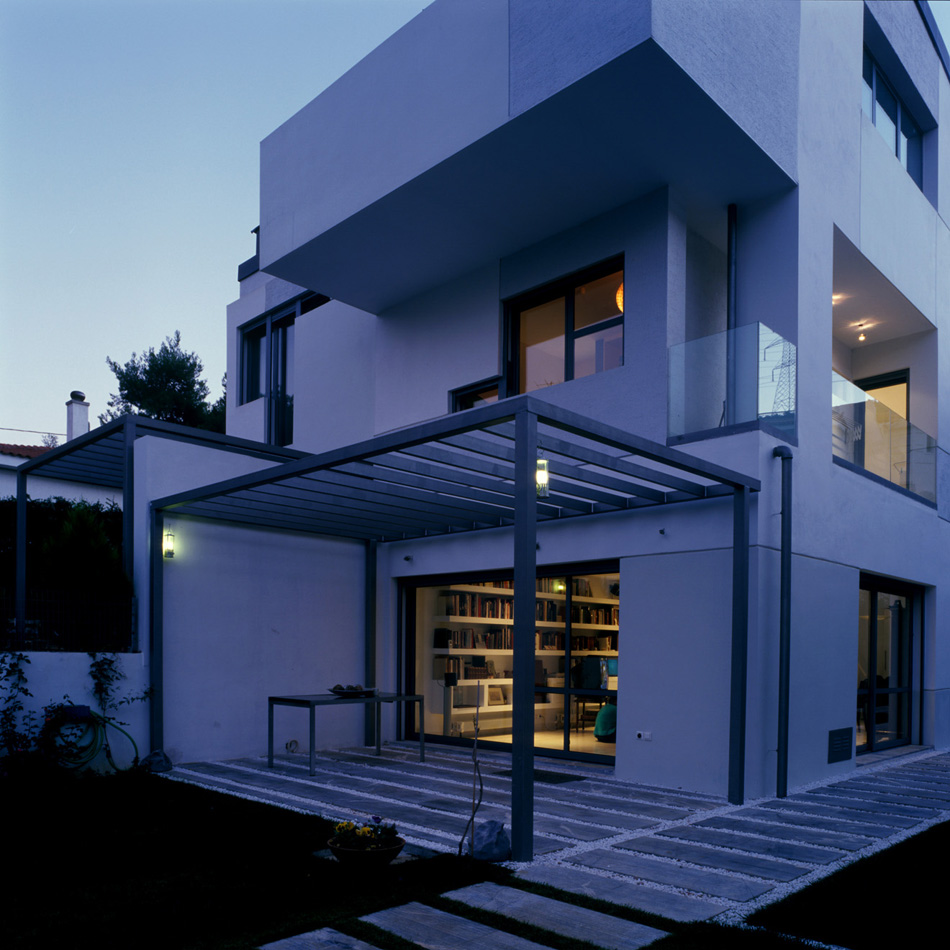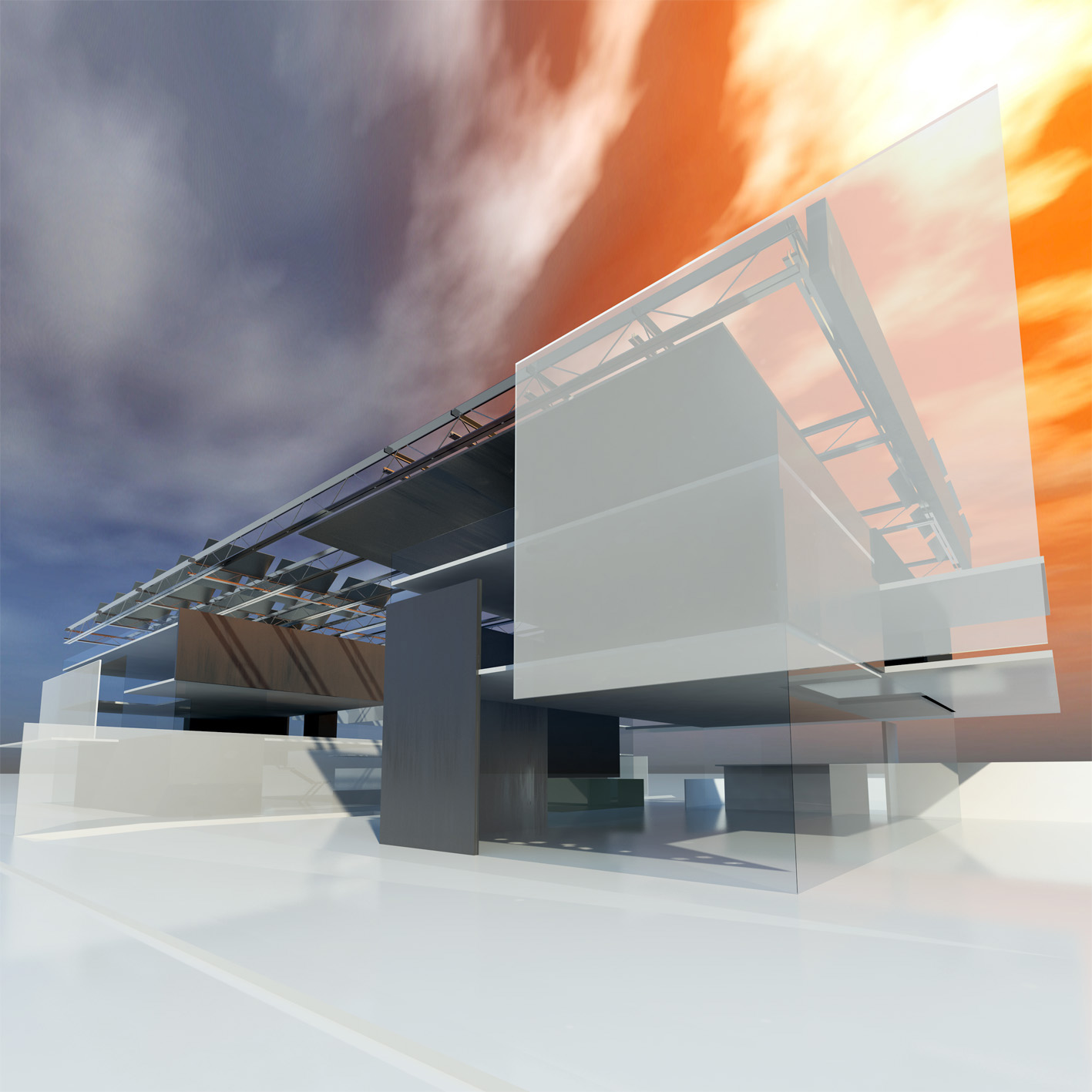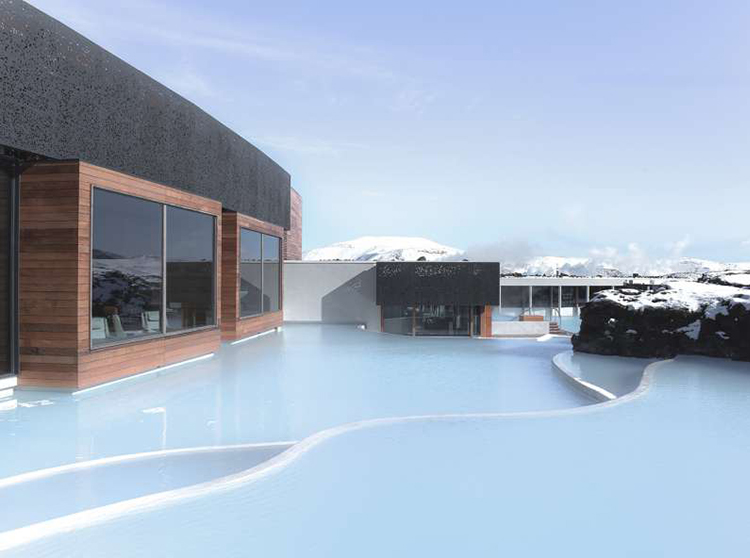Dimitris Potiropoulos studied Architecture at the Technische Hochschule Darmstadt. Research associate in the Freehand Design Department. Specialized in Architectural Design – Special Building Design Topics. Completes his studies in 1981. At the same time he works in various architectural studios in Germany and Greece. Keeps his own office from 1982 to 1987 while participating in architectural competitions. Since 1989 he owns “Potiropoulos D+L Architects” studio together with Liana Nella–Potiropoulou. He has repeatedly been honored in architectural competitions with awards and distinctions. His lectures and articles refer to their own projects and to architectural theory matters. His work has been published in the Greek as well as the international press and presented in exhibitions in Greece and abroad. He is founding member of the “Greek Institute for Architecture” and co-founder/scientific advisor in the “Archisearch.gr” online magazine.
Liana Nella-Potiropoulou studied Architecture at the National Technical University of Athens. Master in Architectural Design and Theory (M Arch) at the University of Pennsylvania. Finishes her studies in 1985. Works in various architectural offices in Greece and retains her own office from 1986 to 1987 participating in architectural competitions. Since 1989 she runs “Potiropoulos D+L Architects” studio in cooperation with Dimitris Potiropoulos. Her work has been displayed in exhibitions in Greece and abroad, and published in the Greek as well as the international press. She has received many times awards and distinctions in architectural competitions. Her lectures and essays refer to “Potiropoulos D+L Architects” work and to architectural theory topics. She has been teaching in the Department of Architecture at the School of Engineering of the University of Patras.
INTERVIEW
What is design for your life? What does design mean for you?
Dimitris Potiropoulos: I will answer about architectural design. Ancient Greeks never made art for art itself; for them aesthetics and beauty intended to serve life. In the same way, we believe that architecture should serve the man’s daily routine. But how? Architectural thinking can “set” spatial experiences that incorporate very strong deeper intentions, extending the limits beyond the building’s material substance between the familiar and the experimental, the organized and the imaginary, the material and the conceptual. Architecture is not only form, or only functional space, neither only material, on the contrary, it forms “life hearths” both in the building’s small scale and in the large urban scale which can revitalize feelings blending reality with the visionary element. Thus, we are concerned about the “theatrical” if we can call it this way organization of space, the way in which architecture can interfere to our environment “coloring” our life, our daily routine.
This approach can stimulate thinking, senses, can offer unique emotions, producing a vital experience of mind and space, and we believe that this is the ultimate role of architecture. We should also not forget that architecture is the product of historic development and that history is a continuous creation process. Creation though means differentiation...
Please describe the changes in design in the last 20 years.
Liana Nella-Potiropoulou: Again we will concentrate on architecture. The critical narration of architecture in the last 20 years, i.e. of contemporary architecture, is not an easy task. Especially when it comes to the work in progress by younger architects, formulating definite evaluation conclusions about the situation of contemporary architecture is neither possible nor desirable. The architecture of the last two decades is in a transition state not only due to reasons related to the political management systems, which drove philosophers to announce the “end” of ideology and history but also due to the fact that architecture develops within a post-industrial period. Architecture is now supposed to reinterpret the multiple fields delivered from the evolution of life itself, to sensitively listen to potential changes of a now open society, searching for new ways of thinking and expression which may combine different intentions.
Which designers/ architects have influenced your work the most?
Dimitris Potiropoulos: I will answer using the words of Dimitris Philippides, from the introductory text “Everything that touches the soul and mind”, in the book about the work of our office, published by “Potamos” publications: “…one could claim that Potiropoulos D+L Architects production was early established on a constructivist conception of architectural space, which presupposes adequate knowledge of the revolutionary art movements at the beginning of the 20th century, and extends these influences in order to include the latest morphological quests of German architecture and the American version of deconstruction, two distinct movements strongly present two decades ago, which, up to a certain point, is due to the architects’ cognitive background…”
What’s your perception about architecture and design magazines nowadays?
Liana Nella-Potiropoulou: There is a huge variety of printed and online architectural magazines, from almost “naive” publications to clearly theoretical ones. Thus, all the groups of readers are finally satisfied, and this is not necessarily negative. However, we would prefer if we talk about the average this specific type to become a little more elaborated, offering at least a sufficient semantic content. In order to reduce somehow the omnipotence of the “image”, which now dominates in widely available publications with wide influence, weakening the evaluative criteria and leading to “fashion” or “common taste”. Thus raises the fake dilemma between an indifferent building and a pictographic, ephemeral design. This is an oversimplification, which we must avoid. Architecture cannot be, and is not, a consumable product that stops to exist after use.
When beginning a project, do you usually sketch your ideas on paper or do you use your P.C. from start to finish?
Dimitris Potiropoulos: Our first sketches are on paper. Very soon though we continue working in a digital environment, with the help of our collaborators, designing in three dimensions the interior and the exterior of the building. Simultaneously, we work with draft models, in order to achieve a reciprocal control of the “concept”, in the digital three-dimensional space, as well as in the real three-dimensional space.
The prevalence of personal computers in the architectural design, since the 80’s decade, has influenced, up to a certain point, the development of architecture itself this fact is a reality. Just as every invention and every innovation affect human life in a deterministic way. What is important, however, is the thought that lies behind the visible and the obvious, giving life to the architectural creation, and every kind of creation. Finally, both paper and the P.C. are only the means or almost only the means and nothing more.
Do you believe that architecture style must find ways in which to integrate itself into its environment, or do you believe that this is not always essential?
Liana Nella-Potiropoulou: There are external parameters that the architect should take into account during the synthetic approach such as the orientation, the climate, the views, interpreting (and not copying) the idiom of Place etc. however this does not necessarily mean that we talk about “integration”. The complexity and “irregularity” of individual components, the co-existence of the opposites, describe the reality of the city itself; the urban environment is not united and monolithic, but a potential structure disintegrated into many individual elements, sometimes in “conflict” with each other, which create the total.
For these reasons, we perceive the role of architecture within the city as a “link” that can strengthen individual urban areas connecting them through their own spatial dynamics. Thus these areas sometimes abandoned, or formless, or fragmented become linked and interesting. So, what we consider useful is that architecture may contribute to the creation of vital urban space, exactly by connecting and reinforcing its internal contradictions and interactions.
How do you perceive the future of the design world?
Dimitris Potiropoulos: Again I will position myself on architectural design. As societies develop, as they become more complicated and interdependent on other societies, the social subjects receive new influences and symbolic shapes for interpreting the world change. This happens nowadays and will happen even more in the future. Thus, after the interference of post-modernism, architecture in the west world today is more pluralistic than ever and with a strong experimental aspect. Nowadays a return to the perception of the building as a single “piece of art” is observed, while some criticize that this “building-object” converses more with fine arts than with its environment. I do not totally agree; I think that things are more complicated. For instance, the so-called deconstruction architecture “returns” to the Russian avant-garde art, while criticizing the chaos of large urban complexes as well as the modern society. Foucault and Derrida propose an anti-realistic and anti-local “model”, with the principles of difference and decomposition being basic elements.
Today, there are also other tendencies, such as the neo-eclectic architecture, the high-tech architecture, the architecture based on the qualities of the void (minimalism) etc. So, I would say that nowadays we have a contradictory and at the same time charming architectural panorama, sometimes more abstract and others more schematic, sometimes simple and others more intense and maybe somewhere within this pluralistic perspective, one can estimate the future of architecture. The complexity of the period we are living in does not anymore allow us to think unambiguous and generalized solutions.
In your opinion, could a modern building become a tourist attraction?
Liana Nella-Potiropoulou: In Greece the consciousness of maintaining important modern buildings, which, together with the historical heritage, complete the picture of our architectural civilization, is not yet developed. In my opinion, an important modern building, is obviously a cultural, hence a tourist, as you call it, attraction and for this reason I think that is should be protected.
You must already know that the legal framework about this protection varies from country to country. Usually, a building is declared as listed 10 to 20 years after it is constructed, while in some states this limit reaches the 50 years. There are however some countries and I would like to highlight this such as Austria for example, which do not adopt any time restrictions, as they think that a building may be considered as “listed” even directly after it is completed, simply because it is important. The answer to the question you posed is pretty complex…
Which advice would you give to the young designers? Is there any young designer that has caught your attention?
Dimitris Potiropoulos: To do what they do with tension and passion. Without passion, architecture, arts in general, would not exist. To be creative. There is nothing more difficult than a really creative architect designing a building, because he should first of all “forget” all the buildings that have ever been designed as we said, creation means difference. Stereotypes are “enemies” of creation; “great ideas” never come from those who easily follow the “rules” or the “common taste”. The architect should not be content with the widely accepted; on the contrary he should try to overdraw this setting the commonly accepted in question.
Therefore, to investigate, to experiment and to dare.
I find very interesting symbolically and conceptually the work of the Danish office BIG Architects.
